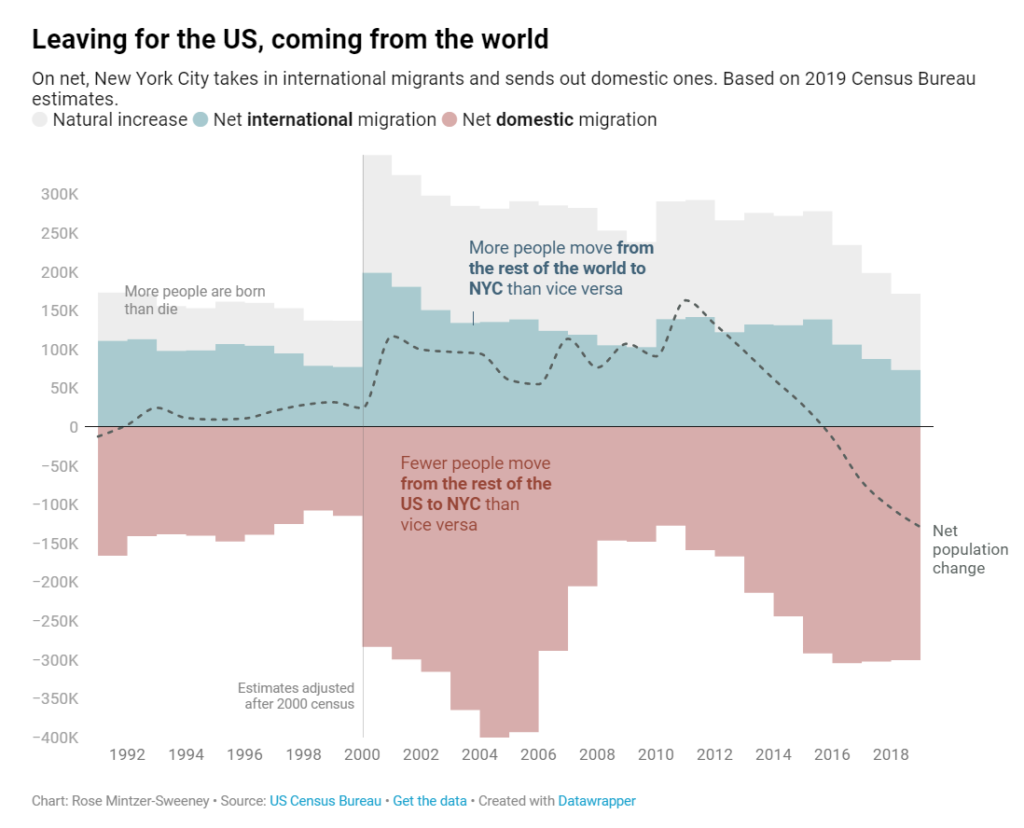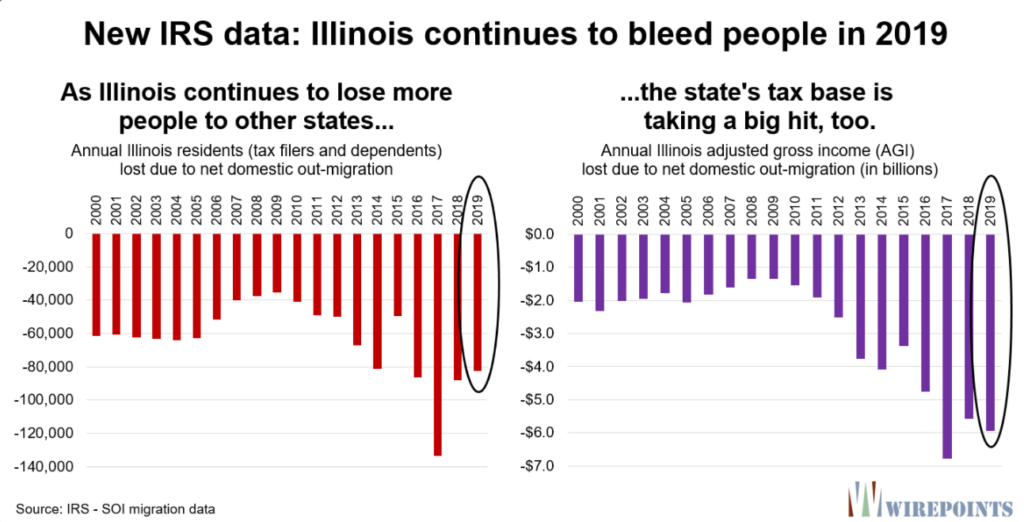Link: https://blog.datawrapper.de/new-york-city-immigration/
Graphic:

Excerpt:
In fact, just having been born here makes me an atypical New Yorker. Of the approximately 8.3 million people who live in the city today, just under half were born in New York State. Eleven percent come from other US states and 40% from the rest of the world. So we’re not wrong to associate New York with immigration—the average New Yorker comes from somewhere else.
I got these numbers from the US Census Bureau, who do their best to estimate not just how many people live in each county, but how they got there: by birth, by migrating from another country, or by migrating from elsewhere in the US. When you take away the people who died, moved abroad, or moved domestically, you’re left with each of these three streams’ net effect on the population that year.[1] Those are the numbers that will show us whether it’s unusual to move away:
Author(s): Rose Mintzer-Sweeney
Publication Date: 3 June 2021
Publication Site: Datawrapper
